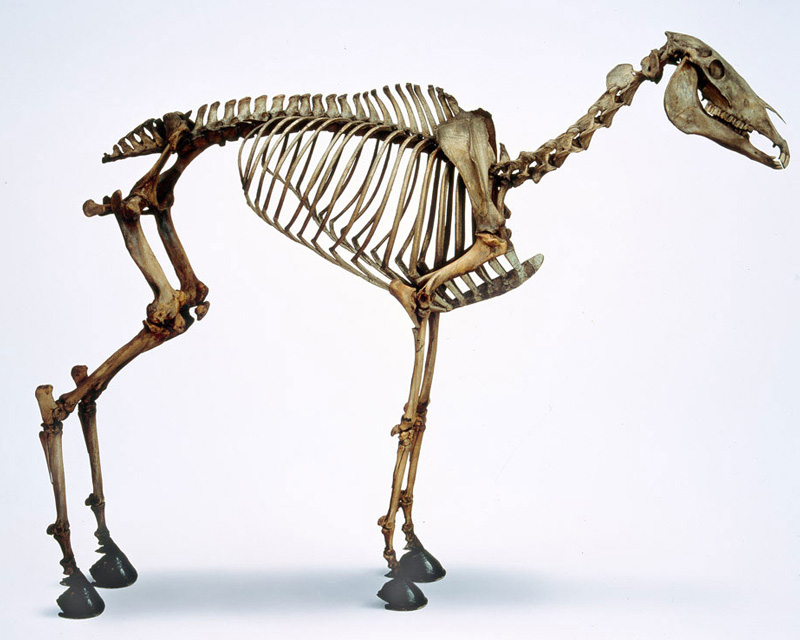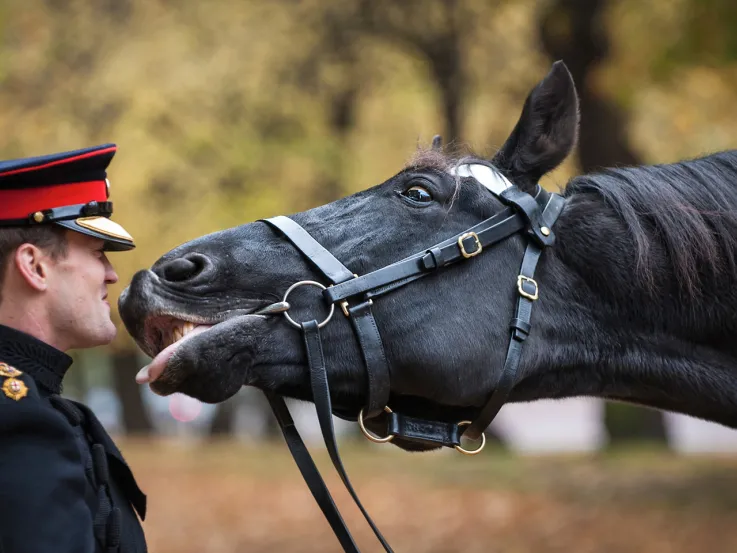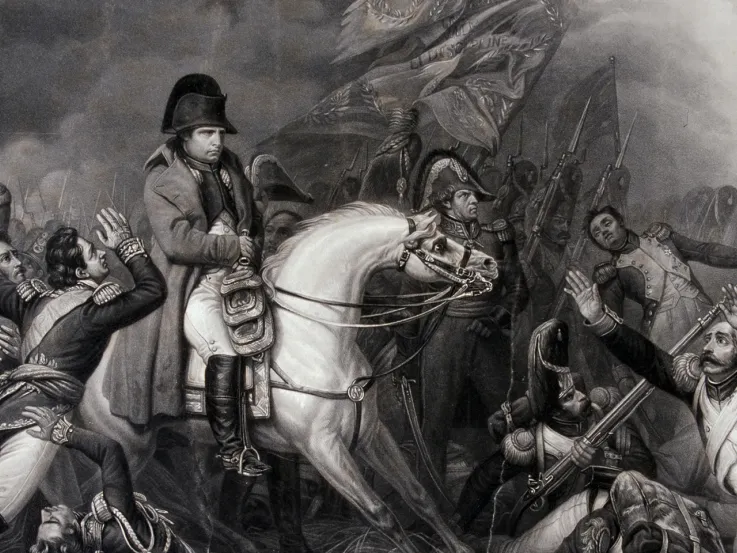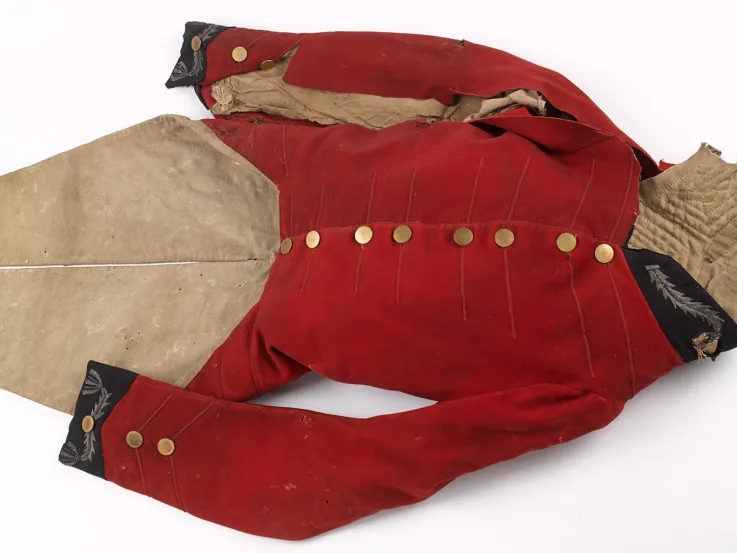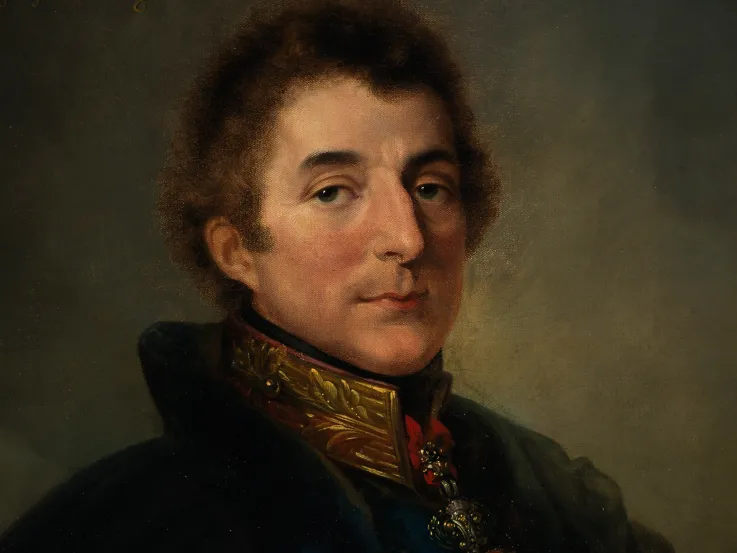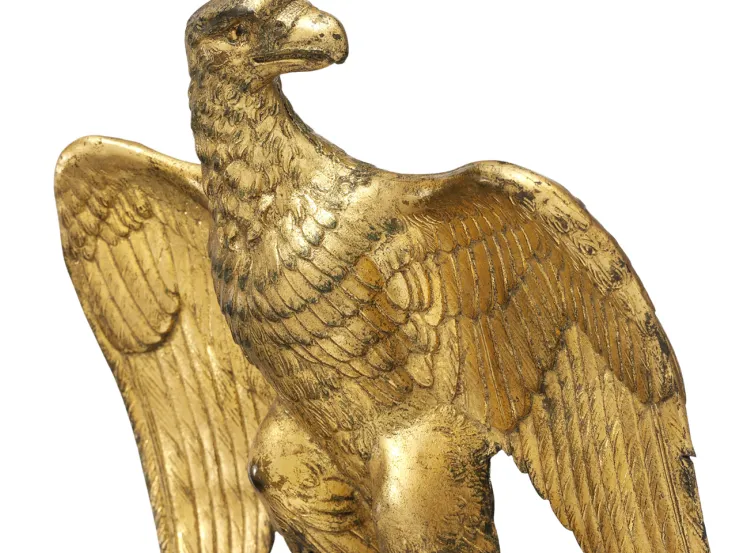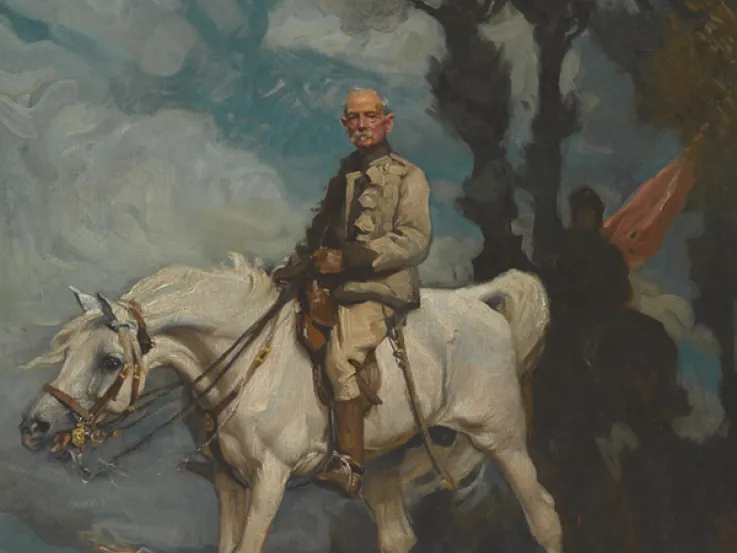
Napoleon on Marengo
Who was Marengo?
Marengo belonged to the French Emperor Napoleon Boneparte. He was an Arab horse, small and grey, and named after the Emperor's victory at the Battle of Marengo in Italy in 1800. Napoleon is said to have ridden him through many of his campaigns between 1800 and 1815.
In 1815, the Duke of Wellington defeated Napoleon at the Battle of Waterloo. Marengo was captured on the battlefield and taken to England. After his death, Marengo's skeleton was displayed at the Royal United Services Institute (RUSI), established by Wellington in 1831. It moved to the National Army Museum in the 1960s.
After a long time on display, Marengo was in need of some conservation work. His bones had resettled themselves, his head had begun to droop, and he no longer stood like a natural horse would.
What's more, he had cracks in his sternum and ribs, and his bones were very dirty.
'He was one of the most loved objects in the old museum. But every time I came into the gallery I always thought there was something sad about him.'Sophie Stathi, Curator, National Army Museum
'The horse's old stance didn't look natural, and the old mount wasn't doing it justice.'Arianna Bernucci, Conservator, Natural History Museum
The conservation process
With such an old and precious item, the decision to undertake conservation work was not taken lightly. We called in experts from the Natural History Museum. Their task was to move Marengo from his original mount and reposition him.
After a thorough inspection, the conservators decided that Marengo still had some fighting strength and his bones were deemed strong enough to cope with the work.
But the team still faced some challenging tasks. Not least of these was the removal of thick metal bars from the centre of his legs - the result of preservation work completed at least 50 years previously.
The makeover
When the first stage of cleaning and conservation was complete, the team worked with prop modeller Derek Bell from Glueworks Studio to reposition the skeleton.
Together, they built a new armature to better support Marengo in his new home. At the same time, his skull got a good cleaning to remove some of the grime that had built up over the years.



